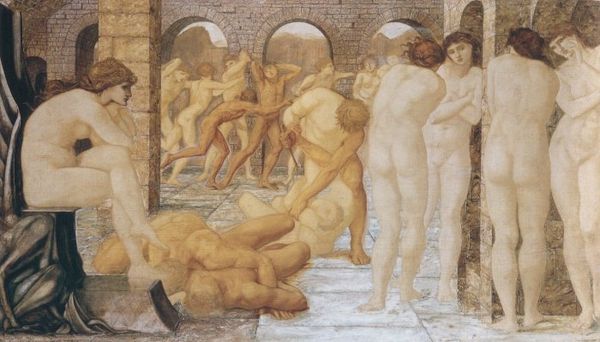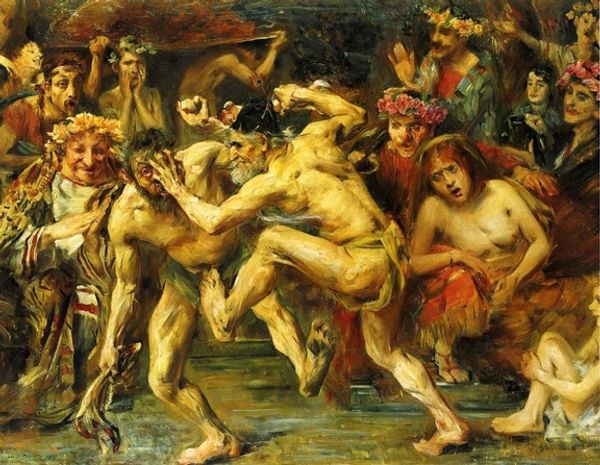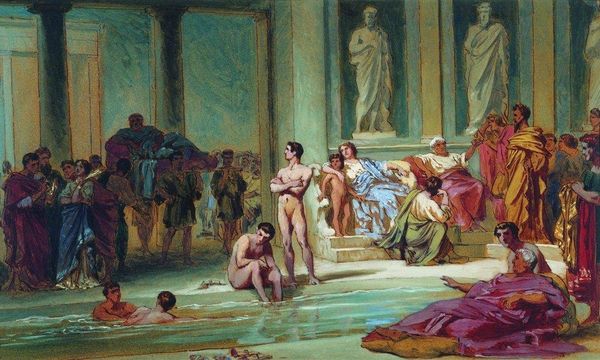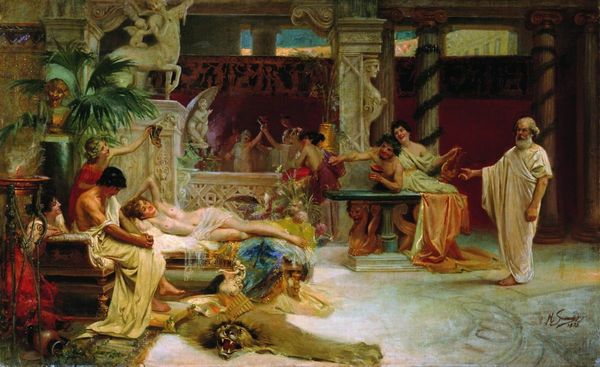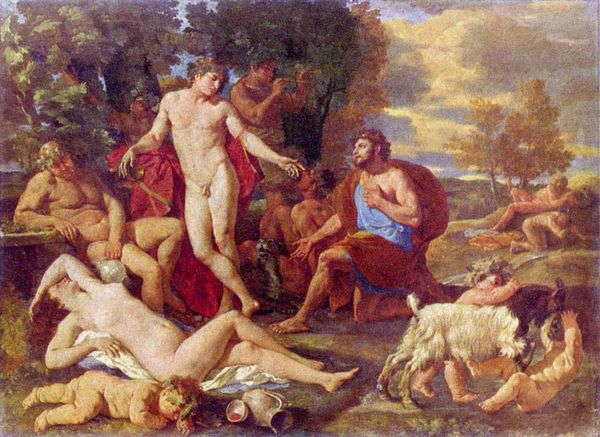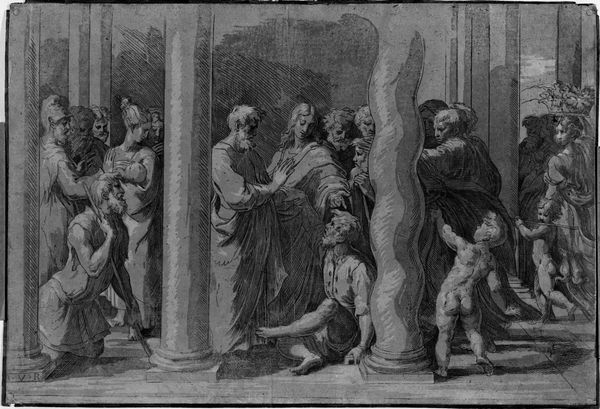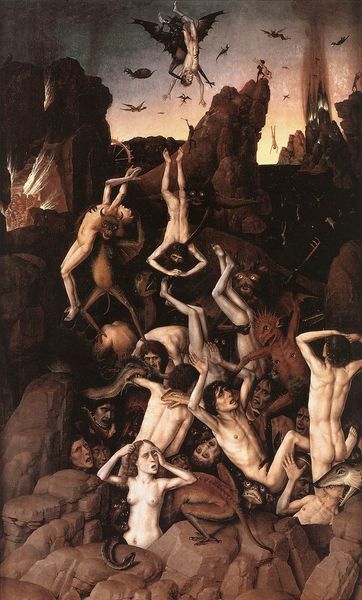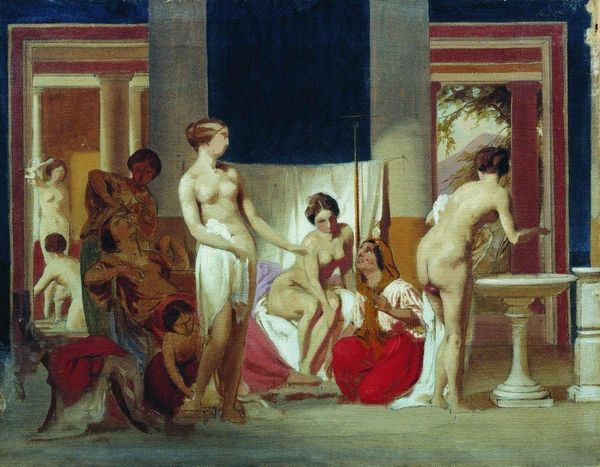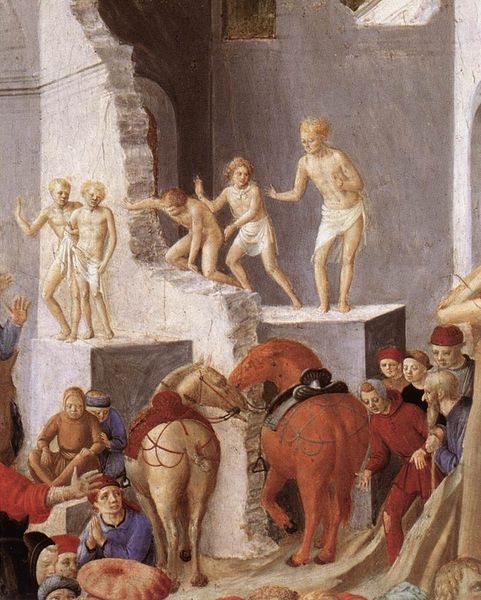
Copyright: Public domain
Gustave Moreau painted this scene, Alice, in the late 19th century with oil on canvas. Immediately, we are drawn to figures adorned with laurel wreaths, symbols of victory and status since ancient times. But observe how Moreau presents these figures—not as triumphant heroes, but as anxious, almost fearful men. The laurel, in its traditional Roman usage, signified an emperor's eternal glory, but here the figures are seemingly vulnerable. The group evokes the imagery of classical bacchanals, yet stripped of the uninhibited joy and revelry typical of such scenes. The composition, with its figures huddled together, carries an emotional charge. This huddling echoes the ancient motif of the crowd seeking protection. The enduring power of symbols lies in their capacity to tap into our collective memory. The image engages us on a deep, subconscious level. This is how symbols echo through time, continually transformed by new cultural contexts and artistic visions.
Comments
No comments
Be the first to comment and join the conversation on the ultimate creative platform.
